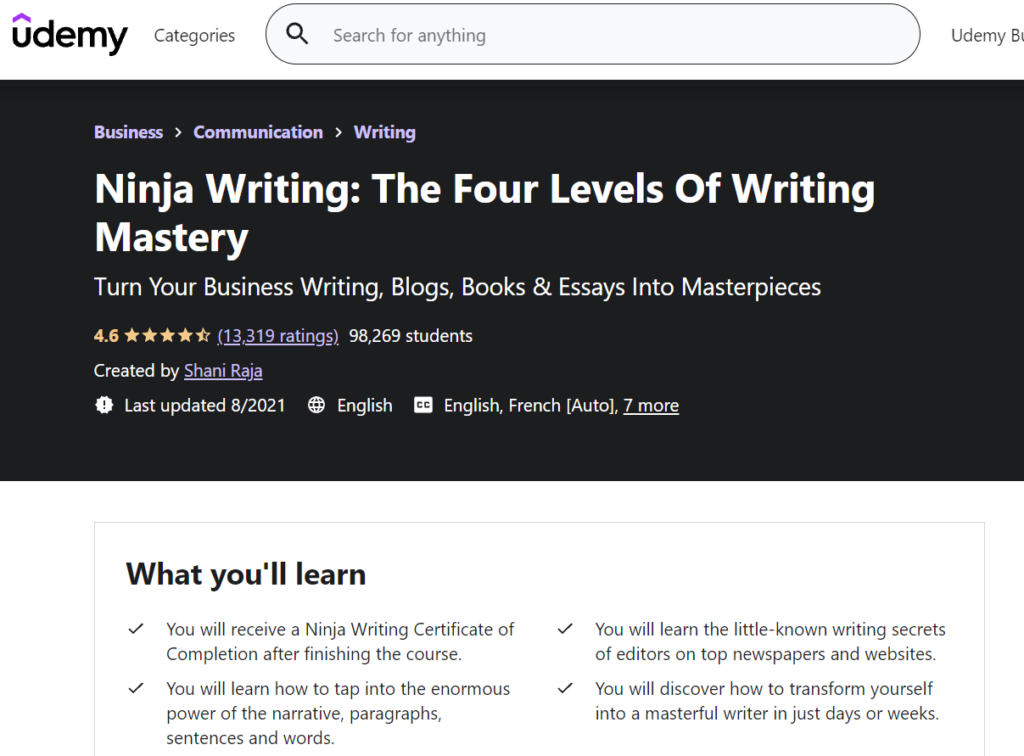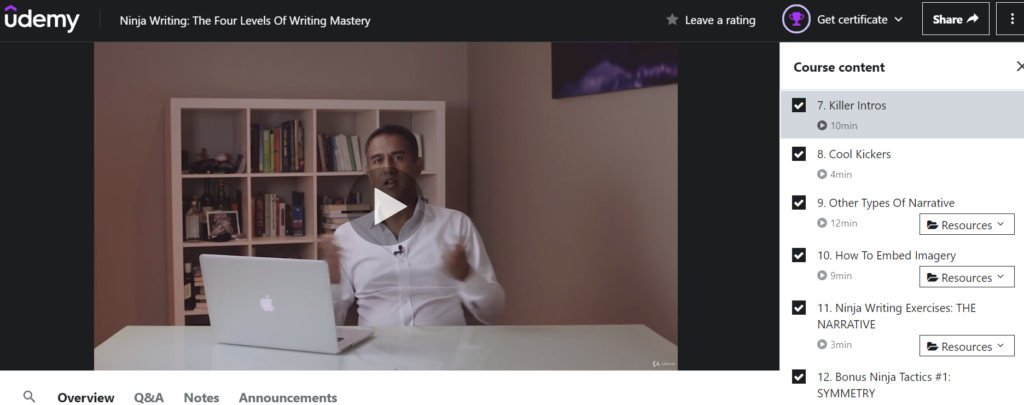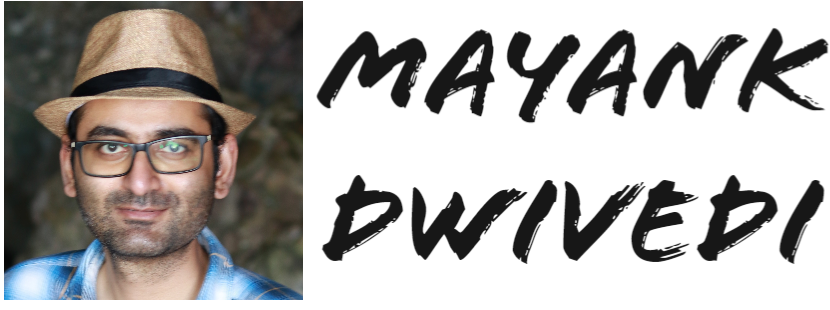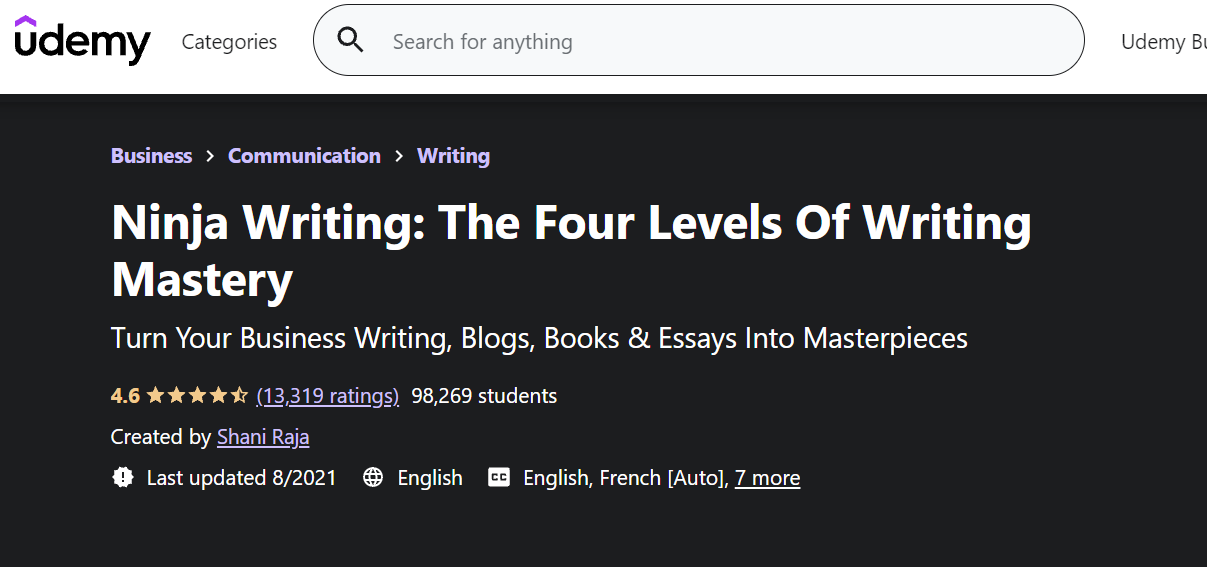Who is this online course for?
1. New writers
2. Journalists/Bloggers/Novelists
3. Experienced writers
4. Job seekers looking to improve their cover letter
5. Marketing professional who need to write content for campaigns
6. Professionals whose job requires writing documents for business reviews/leadership information
Ninja Writing – The Four Levels of Writing Mastery

Overall Course Rating
Overall Rating: 4 out 5
This course gives you an overview of how to write effectively – making it easier for your readers to understand you, enabling you to tell more with fewer words, at the same time making your writing catchy and stand out.
I found this course useful as a good refresher for new and experienced writers.
However, part of this course is using correct grammar, right words which fit the meaning of the sentence, and writing sentences in a simple, succinct manner. For a native English speaker, or for someone who has been reading and writing in English for more than 10 year, this is not new information.
The part of the course which talks about spicing up your narrative to make the reader stick, is informative and something you can adapt to improve your writing skills.
Owing to this, I have given an above average rating of 4/5 to this course.
My Aha moment while reading this course
As I undertook this course, I expected writing tips on forming sentences, choosing eye-catching words/headlines, grammatical refreshers etc. What I did not expect, is what comes before you even start writing.
In the section on the narrative, the instructor implores the course students to decide, and pen down the audience for which they are writing, the outcome of their writing, and subsequently the tone of their writing. If you are writing to criticize a newly released movie, then your audience is potential movie viewers, your outcome is your opinion of the movie (good or bad), and your tone should be neutral, as you critique without getting too negative.
Intent + Audience = Content + Tone
Once you create the strategy for your narrative – the audience, the outcome, the tone of the writing, you will feel more confident to proceed with the actual writing. Your mind will be clear on your goal, and you can breeze through the relatively other part of actual writing.
This to me was a magic moment, to realize that the important and probably 50% part of the work involved in writing, is done before you begin writing. This learning has helped me better plan my writing journey henceforth, as I create a strategy and even a broad framework of what I am going to write about, before I actually write.
Three things I Liked about the course
Like 1. Easy to remember frameworks: Instructor uses easy to remember frameworks to communicate his teaching. Example: three core parts of good writing are simplicity, clarity, and elegance; Get to the point by Grabbing the bull by the horn! Instructor divides the course into layered writing levels, starting at a high level of narrative, to paragraph, then sentences and finally to words.
Like 2. Catchy, Fun Names: Instructor uses fun, catchy names of course and sub-sections of the course. Example: Ninja Writing course, Cool Kickers etc. These titles make the course fun, and removes the academic sense that some people get when studying a monotonous instruction based course, which may remind them of high school classes/college lectures. Instructor also uses the title of his course sections as an example in the course, which makes this course more realistic and engaging.
Like 3. Using examples to drive home the point: Instructor uses examples in almost every video section. This is done immediately after a new learning or writing tip is presented. These examples help us test the new knowledge we have learned, reinforce the recent learning, and also help you immediately apply what you have just learned. This may be an old school teaching method, and works.

Two things which could improve this course
Opportunity 1. Too much focus on stock related writing: There are more examples on stock related news and information. This was expected as the instructor is an ex-Wall Street journal editor. However, the instructor should try to include examples from a wide domain, such as marketing, cover letters, business emails etc. to appeal to a larger audience. This point for me is a good one to have in this course, and is not a shortcoming in this course; The author achieves what he intended to by using stock related examples – to reinforce the learning in this course.
Opportunity 2: Long face-time lecture makes it (slightly) boring: The entire course is a direct face-time with the instructor. This makes it feel like a lecture, and slightly boring. Also the instructor is not a captivating speaker, and has a serious neutral tone throughout the course which is a perfect recipe for falling asleep. Based on other online courses I have taken, it would be better if the instructor used colorful slides in-between the video course. Instructor can do this by creating short Microsoft PPT slides on the key points, or summary from this sub-sections, and toggle between this slide and his face-time lecture to break the monotony of the course.
My One Sticky Learning from this course
One learning from this course that stuck with me, was to think about the readers. The lessons in this course are all about making reading and understanding easier for the reader. Give a long hard pause after a long complex sentence. If you are introducing a new idea, start with a new paragraph. Avoid backreferencing a previous sentence or paragraph. Use shorter words if available, for example Firms is better than Companies.
After all, your reader is who will rate and value your reading. If readers are not interested, you will have less viewership, and your writing efforts will reach fewer people.
Adopting this mental model will help you in keeping your narrative simple, yet to the point. It will help you put on the mask of the reader, and avoid using jargon or acronyms only known to you or those in your line of work. After all, what is a performance (act of writing) without a good applause from the audience (the reader).
Course link on Udemy
- Ninja Writing: The Four Levels Of Writer Mastery | Udemy
Turn Your Business Writing, Blogs, Books & Essays Into Masterpieces


